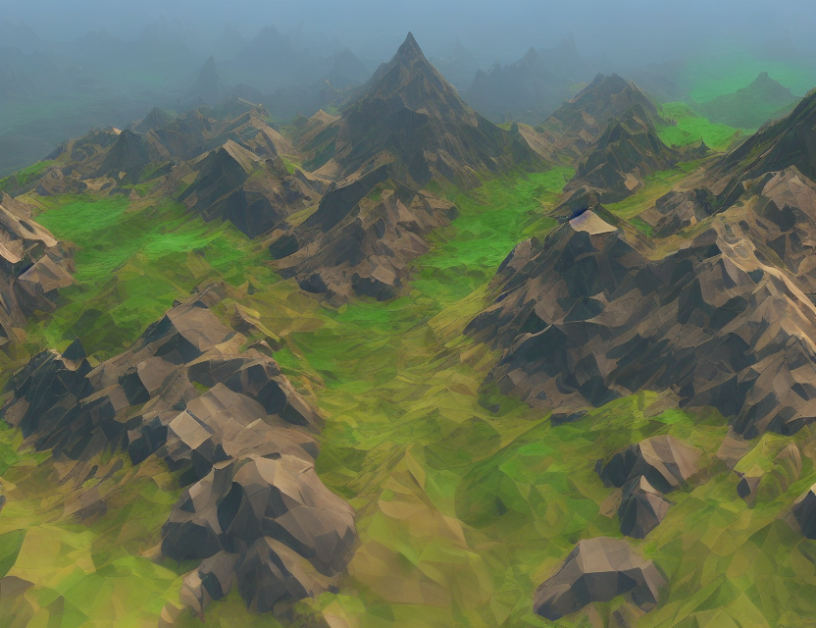Monocular depth estimation is a fundamental problem in computer vision that involves estimating the depth of a scene from a single image. This task has numerous applications, including robotics, autonomous driving, and virtual reality. In recent years, there has been significant progress in this field, mainly due to the development of deep learning techniques. This review aims to provide a comprehensive overview of the state-of-the-art methods for monocular depth estimation, including their strengths, weaknesses, and future research directions.
Methods for Monocular Depth Estimation
There are several approaches to monocular depth estimation, which can be broadly classified into two categories: direct and indirect methods.
Direct Methods
Direct methods aim to estimate the depth map of a scene directly from a single image without requiring any additional information. These methods typically use convolutional neural networks (CNNs) to learn the mapping between the input image and the output depth map. Some popular direct methods include:
- Depth from Focus (DNF): This method uses the blur effect of objects in the scene to estimate their depth. The idea is that objects closer to the camera will be more blurry than those further away, allowing for accurate depth estimation.
- Displacement Field Networks (DFN): This method represents the depth map as a function of the input image and estimates it using a CNN. DFN uses a coarse-to-fine approach to estimate the displacement field, which is then used to generate the final depth map.
- Neural Depth Estimation (NDE): This method uses a CNN to directly estimate the depth map of a scene from a single image. NDE typically requires a large dataset of images with annotated depth maps for training.
Indirect Methods
Indirect methods, on the other hand, use additional information about the scene to estimate its depth. These methods include:
- Stereo Vision: This method uses two or more cameras to capture the same scene from different angles. By comparing the images, it is possible to calculate the depth of objects in the scene using triangulation.
- Structure from Motion (SfM): This method uses a set of images taken from different viewpoints to estimate the 3D structure of the scene. SfM typically requires multiple images with distinctive features, such as corners or edges, to establish correspondences between images.
- Multi-View Stereo (MVS): This method combines stereo vision and SfM to estimate the depth of a scene from multiple viewpoints. MVS typically requires a large number of images taken from different angles to produce an accurate depth map.
Advantages and Challenges
One of the main advantages of monocular depth estimation is its ability to provide detailed information about the depth of a scene without requiring any additional equipment, such as stereo cameras or LiDAR sensors. However, this advantage comes at the cost of accuracy, as direct methods typically produce less accurate depth maps than indirect methods. Indirect methods, on the other hand, are generally more accurate but require additional information about the scene, which may not always be available.
Another challenge in monocular depth estimation is the lack of annotated data for training deep neural networks. While there are several datasets available for stereo vision and SfM, there are very few datasets specifically designed for monocular depth estimation. As a result, most methods use indirect methods as a starting point and then adapt them to monocular scenarios using heuristics or domain knowledge.
Future Research Directions
Despite the progress made in monocular depth estimation, there are still several challenges that need to be addressed in future research. Some of these challenges include:
- Improving the accuracy of direct methods: While direct methods have shown promising results in recent years, they still produce less accurate depth maps than indirect methods. Future research should focus on developing new techniques that can improve the accuracy of direct methods without sacrificing their computational efficiency.
- Developing new datasets for monocular depth estimation: The lack of annotated data for training deep neural networks is a significant challenge in monocular depth estimation. Creating large-scale datasets specifically designed for monocular depth estimation could help improve the performance of direct methods and reduce their reliance on indirect methods.
- Addressing occlusion and motion: Monocular depth estimation is particularly challenging when objects in the scene are occluded or moving. Future research should focus on developing techniques that can handle these challenges effectively, such as using motion cues to estimate the 3D structure of a scene or using occlusion detection algorithms to identify areas where the depth map may be less accurate.
Conclusion
In conclusion, monocular depth estimation is an essential problem in computer vision with numerous applications in robotics, autonomous driving, and virtual reality. While there have been significant advances in this field, there are still several challenges that need to be addressed in future research. By developing new techniques that can improve the accuracy of direct methods, create large-scale datasets for monocular depth estimation, and handle occlusion and motion effectively, we can unlock the full potential of monocular depth estimation and enable more accurate 3D perception in a wide range of applications.



